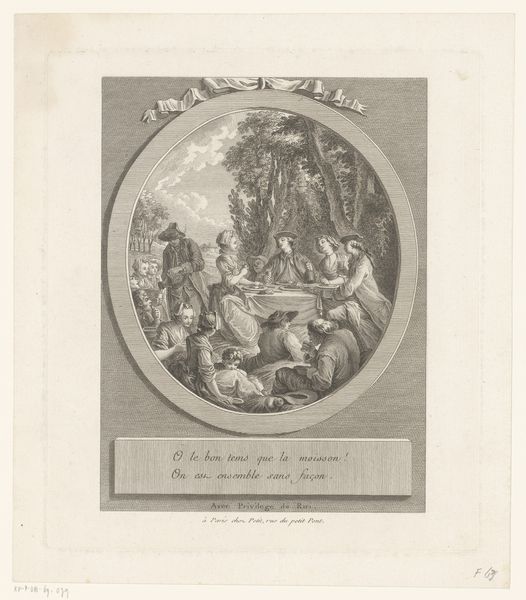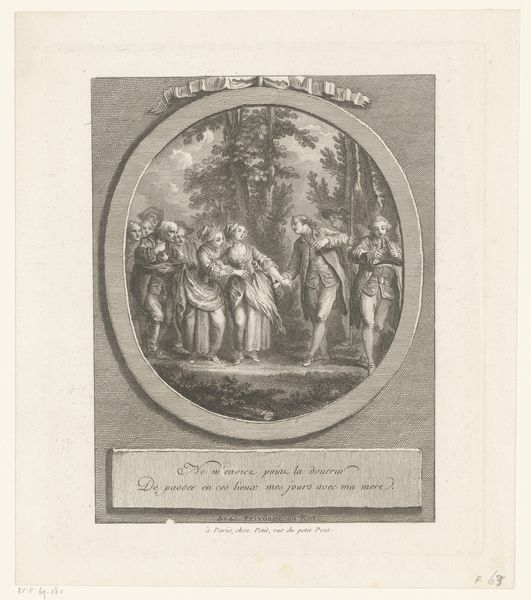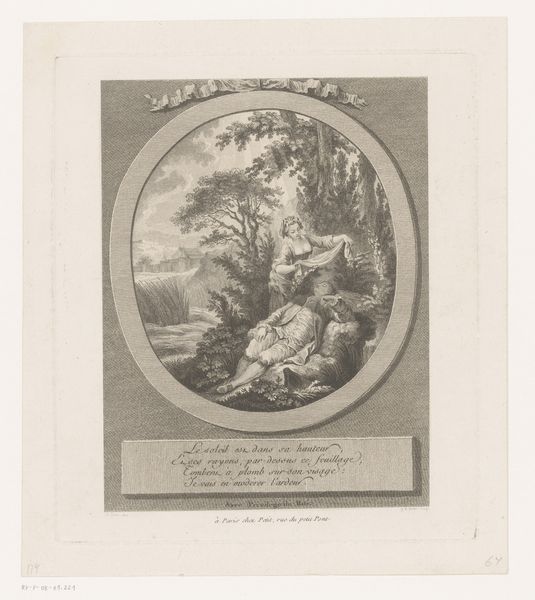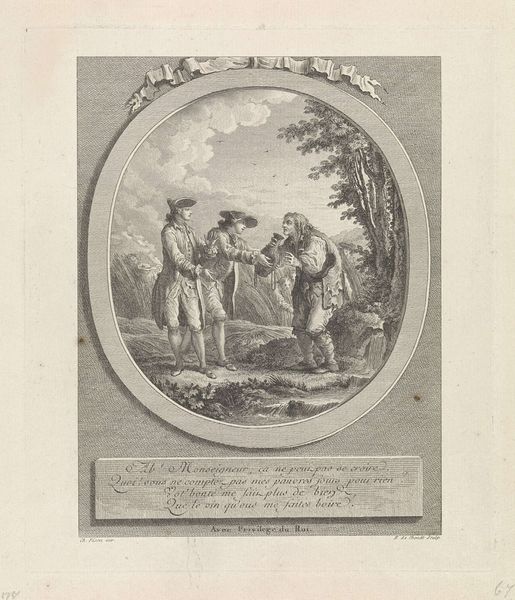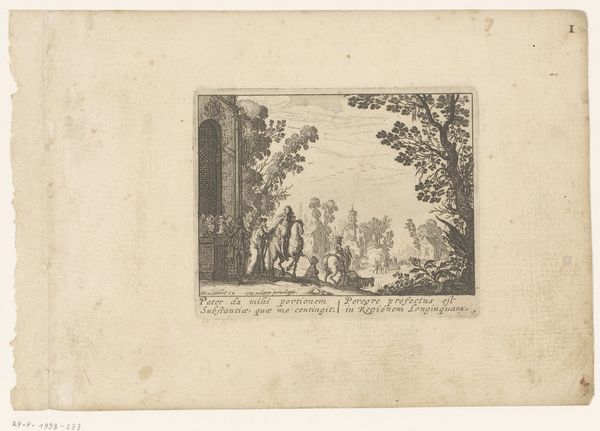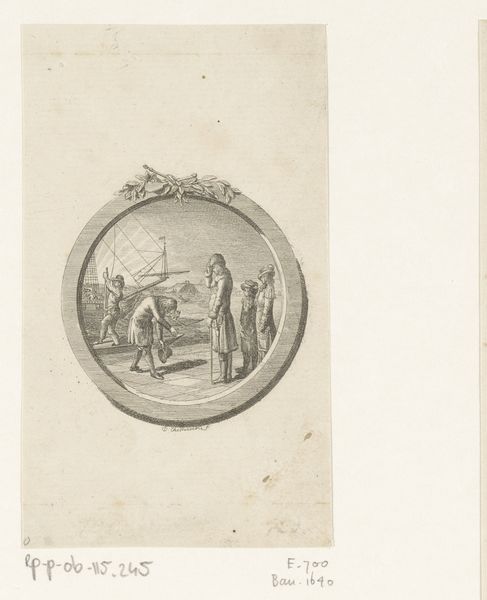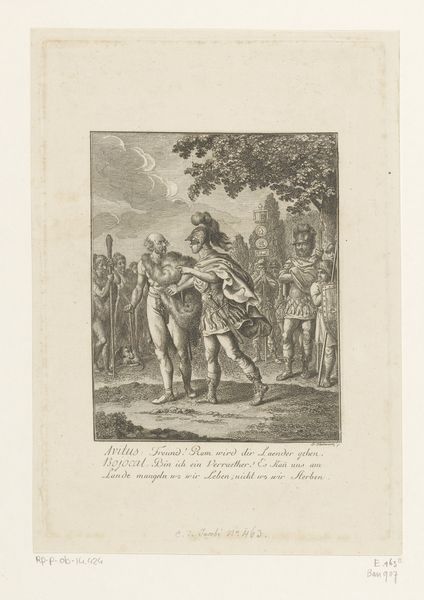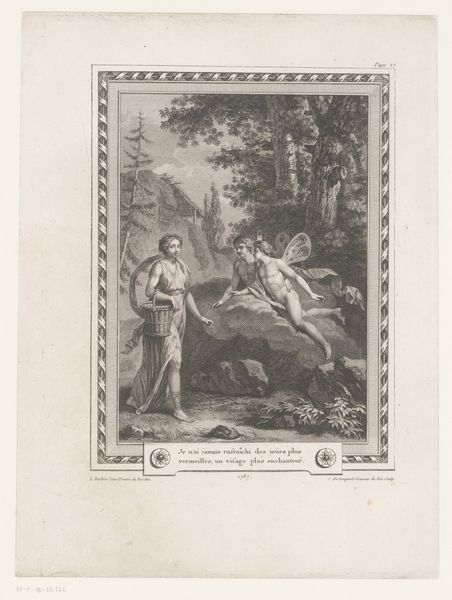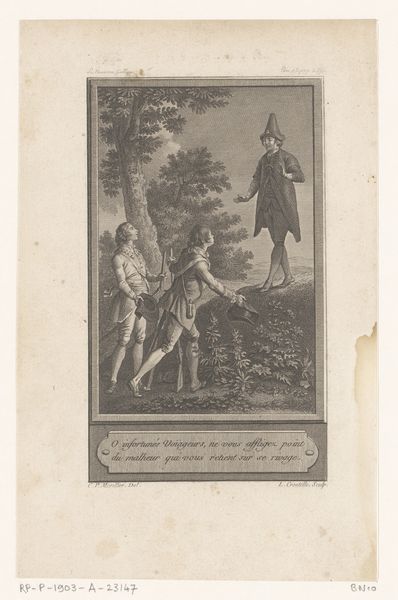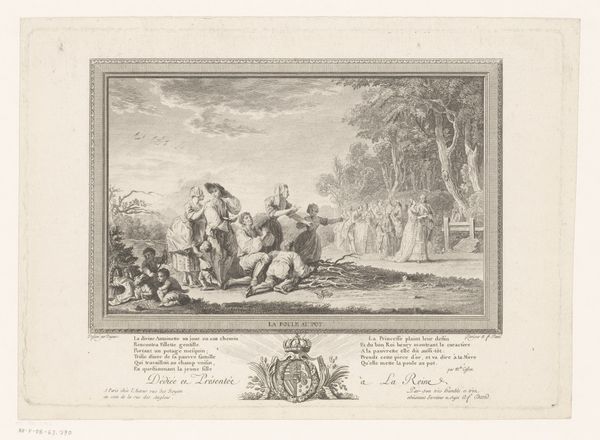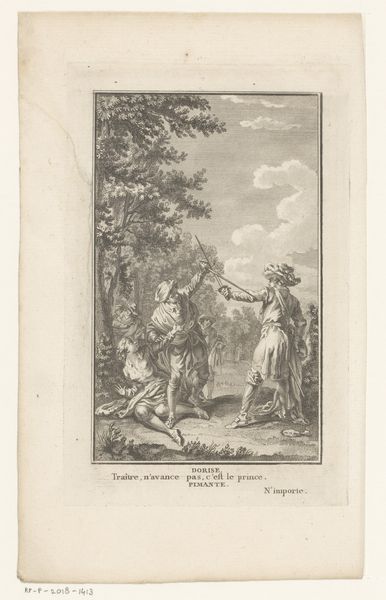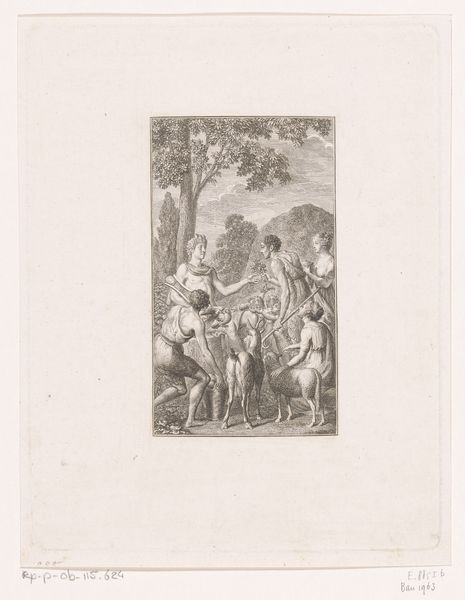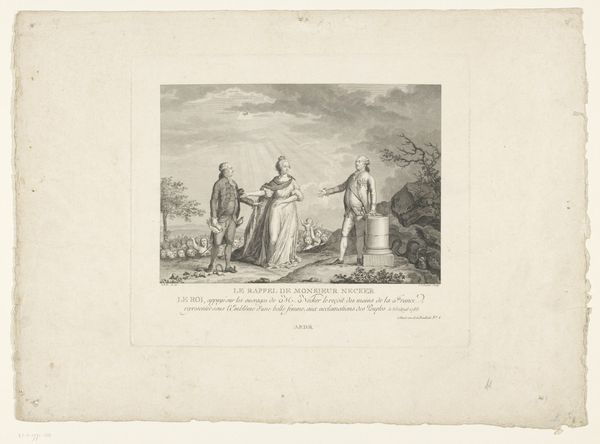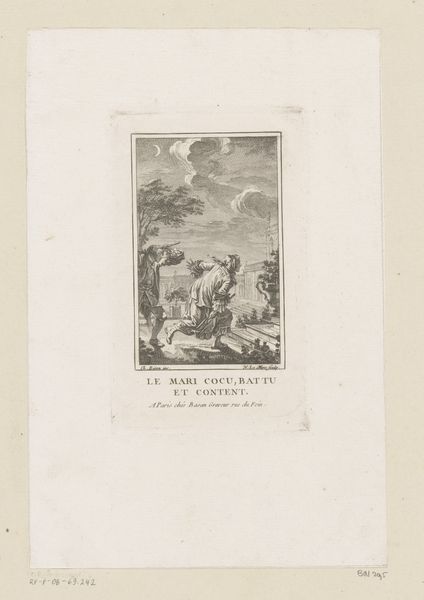
Dimensions: height 244 mm, width 211 mm
Copyright: Rijks Museum: Open Domain
Curator: Allow me to introduce you to Pierre Adrien Le Beau’s “Twee mannen en een vrouw op een korenveld,” created in 1768. It's currently housed in the Rijksmuseum. Editor: It has a theatrical feel, almost staged. The crisp lines lend an unusual precision, despite the pastoral subject matter. And that framing! Very decorative. Curator: Indeed. The line work is critical; it establishes a clear hierarchy within the composition, directing the eye deliberately through the narrative elements, adhering to Baroque aesthetics despite the increasing Neoclassical sentiments of the period. Editor: What strikes me immediately is how the materials, the engraved plate and the inks used, create a mass-producible object meant for a wider audience than traditional painting would allow. This affects its reception, shifting art viewing from the aristocratic salon to, potentially, the coffee house. Curator: Your observation is relevant, certainly. However, consider the formal qualities again—the balanced asymmetry, the clear foreground and background, how each figure is rendered. Note the central female figure, rendered in clear light compared to the somewhat darker shapes of the men to the side. This deliberate organization speaks to a conscious control of pictorial space, an exploration of visual relationships. Editor: I'm equally intrigued by the question posed in French within the work itself; "Pourquoi la chagriner?" the engraving asks. Why tease or bother the woman? She’s pretty and wise...Consider this in light of who had access to such prints, the message takes on complex dimensions concerning social expectations and potential inequalities within a largely agrarian labor system. It forces us to acknowledge this wasn’t a world of pure idyllic beauty. Curator: And it brings an interesting interplay between the purely visual and literary meanings too. A print of genre scenes becomes an accessible way for broader viewership to partake in stories that once only circulated among particular classes or groups. Editor: Ultimately, Le Beau's work provides us with a tangible connection to the means through which people received art and considered narratives within specific social strata. Curator: Quite right. It leaves me contemplating not just the composition but the intentionality driving its design—how academic precision intersected with emerging modes of dissemination to shape public engagement.
Comments
No comments
Be the first to comment and join the conversation on the ultimate creative platform.
